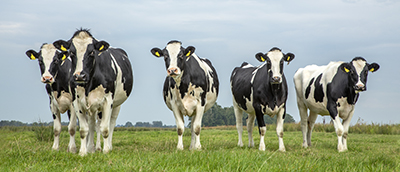Deworming dairy replacement heifers: Testing, treatments & timing
By Harold Newcomb, DVM, Technical Services Manager, Merck Animal Health

Parasite-free heifers convert feed more efficiently, have fewer disease problems, enter the milking string sooner, produce more milk and have fewer breeding inefficiencies. Even a few parasites in high-producing lactating dairy cows and heifers can reduce herd performance.
Deworming replacement heifers helps dairy producers boost herd health ahead of the heifers joining the milking string. But deworming at the wrong time or without proper testing can lead to resistant parasites. A successful parasite control strategy involves testing, choosing the right treatments and treatment timing.
The first step is measuring fecal egg counts (FEC) to determine if deworming is needed. It takes 20 fecal samples per cohort to adequately assess the level of parasitism within that group. If the FEC shows that treatment is needed, then treatment should be followed up with a Fecal Egg Count Reduction Test (FECRT).
For more than a decade, Merck Animal Health has maintained the world’s largest FECRT database to monitor field-use effectiveness of dewormers approved for use in U.S. cattle. From 2009-18, results from 721 trials and more than 24,000 samples, representing more than 24 states, have been compiled.
The FECRT protocol consists of taking 20 random samples from the group of interest on the day of treatment and another 20 random samples from the same group 14 days after treatment. Pre-treatment and post-treatment samples are sent to the same lab and tested to determine fecal egg count reduction. Results are entered into the database and sent to the participating clinic, veterinarian and owner.
To be considered effective, a deworming program must result in a 90% or greater reduction in FEC. According to the FECRT database, certain classes of dewormers are losing their effectiveness. The endectocide pour-on and injectable products are performing well below the 90% FEC reduction threshold. Endectocide pour-on products show only a 51% efficacy with almost half the eggs remaining 14 days after pour-on application.
FECRT database analysis shows by adding Safe-Guard® (fenbendazole) to an endectocide treatment resulted in 99.1% effectiveness. To keep existing dewormers effective, dairy producers using a dewormer that ends in “-ectin” should consider adding another product where the active ingredient ends in “-zole”, such as Safe-Guard or Panacur®.
A concurrent class deworming program, as described above, is part of a sustainable deworming program that helps keep resistance to a minimum.
Treatment timing is important to help lower parasite burdens not only in the animal but in the pasture as well, where 90-95% of the parasite burden resides in the form of parasite larva and eggs. Deworming in the fall after a killing frost helps reduce pasture contamination through the winter. In the spring, grazing animals should be dewormed about 6 weeks after green up and again about 28 days later using a concurrent class deworming program.
Learn more at SafeGuardWorks.com.
Read other articles here:
